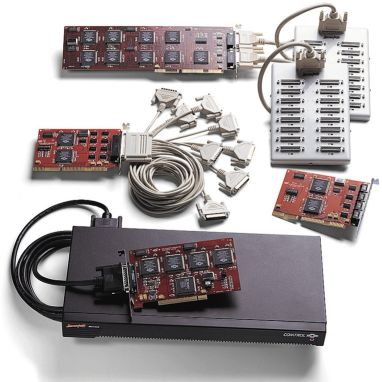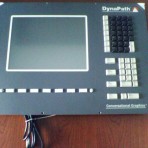
Connecting the Shop Floor to the Office
Networking ranges from SERIAL to BROADBAND
Choosing the correct mix can give you a great Return on Investment.
Serial
SERIAL COMMUNICATION is the basic means of transferring program data. Most machines have a serial communication port (RS-232) for data, and for those of you still using paper tape, we offer hardware (Behind-The-Reader, or BTR’s) to install serial port replacements.
SERIAL NETWORKING can consist of one cable from one PC connected to one machine, or dozens of machines connected to Serial Port Extensions. This eliminates the need to have “copies” of programs on disk, and means that Operator-edited programs can be delivered back to the Programmers for management and storage.
Cable routing is critical with a Serial Network, as electrical noise can interfere with the transmitted data. The proper placement of hardware and routing of cables can be extremely important in insuring high-speed error free data flow.
Broadband
BROADBAND NETWORKING, (or Local Area Network, LAN), on the shopfloor is gaining popularity as the benefits are recognized. The most common broadband network platform is Ethernet, which is used in the majority of offices today.
ETHERNET LAN’s allow data transfers at an extremely higher rate than serial, and has error-correction built-in. The ability to detect and correct errors “on-the fly” (unlike Serial Communications) is what makes Ethernet networks so effective. Cables routed properly are minimally affected by electrical noise interference.
This makes a LAN ideal for transferring all types of information between the office and the shopfloor. Not only will your part-programs will arrive at the machine fast and accurately; a Broadband network can be used to transfer Drawings, Setup Sheets and other information to shopfloor PC’s, as well as shopfloor information back to the front office.
Keep in mind that although some newer CNC controls offer Ethernet connections, most machines only use serial communications for data, and so even when connected through a broadband network, the final link is serial.
The conversion from Broadband to Serial requires hardware. This can be a “Serial Hub” with multiple serial connections (a Broadband/Serial Network combination), or individual units mounted on each machine. The cost of Serial Hubs may be lower, but the length and routing of the serial cables from the hub to the machines may reduce data integrity.
ETHERNET CABLE DETAILS
